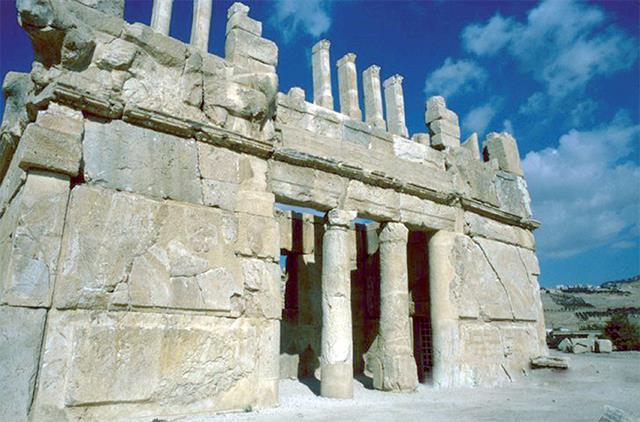
Hellenistic Monument Of Iraq Al Amir : Discovering French-Jordanian Archaeological Cooperation
The lecture about Iraq Al Amir was the last presentation organised this year between the French embassy in Amman, Ifpo and ICOMOS.
The main French field work took place between 1976 and 1987 while American expedition came to the site in 1963. Two volumes about the results of excavations were published in 1991 and 2005, Kurdy said.
The area was a domain of an Ammonite family Tobiades who collected taxes in the East and West Bank, Kurdy said, adding that this monument Tyros was greatly extended and adorned in 2nd century BC by Hyrcen, the last known member of that family.
“The palace in Iraq Al-Amir dates from 3rd -2nd century BC,” Kurdy said, adding that Roman historian Josephus from 1st century AD describes the building.
The French archaeological team worked on the Qasr, the gate, the village and caves.
“The site had a very complex water system,” Kurdy emphasised, noting that big cisterns also served for water harvesting and storage. Around the palace an artificial lake was created in order to provide water throughout the whole year.
Scholars found at the site two levels, vaulted ceilings, tanks with fountain, very deep foundations and terrace around the palace, Kurdy said, adding that the team still did not figure out how water supplied the palace.
“Lions were part of the outer decoration of the palace, with a lioness with mane as one of them,” she underlined, adding that inside the palace Hellenistic doors were found and studied.
At Iraqi Al-Amir, there are many caves in the hills which were inhabited during the Chalcolithic Period, including the cave church from the Byzantine Period.

Legal Disclaimer:
MENAFN provides the
information “as is” without warranty of any kind. We do not accept
any responsibility or liability for the accuracy, content, images,
videos, licenses, completeness, legality, or reliability of the information
contained in this article. If you have any complaints or copyright
issues related to this article, kindly contact the provider above.
Most popular stories
Market Research

- Moonx: The Leading Crypto Trading Platform With X1000 Leverage And Unlimited Meme Coin Access
- T-REX Launches Intelligence Layer To Fix Web3's Value Distribution Problem
- Yield Basis Nears Mainnet Launch As Curve DAO Votes On Crvusd Proposal
- Bydfi Highlights 'BUIDL' Ethos During Newcastle United Match Against Arsenal
- Alt.Town Introduces $TOWN Token Utility Across Platform Services And Launches Valuefi Deposit Event
- Dexari Unveils $1M Cash Prize Trading Competition


















Comments
No comment